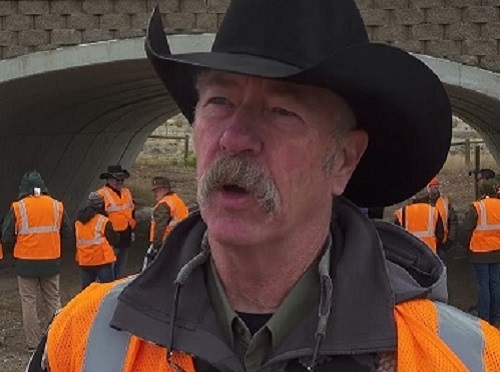The Wyoming Department of Transportation recently completed a long-awaited project aimed at reducing wildlife-vehicle collisions along the Green River in western Wyoming.
[Above image by Wyoming DOT]
The agency released a video detailing how wildlife crossings built as part of its $15.1 million Dry Piney project will help reduce wildlife-vehicle collisions.
The Dry Piney project – a joint effort between the Wyoming Game and Fish Department and the Wyoming DOT – includes nine underpasses and 16.7 miles of eight foot-high fencing on both sides of Highway 189 in the western part of the state to protect big game animals, primarily mule deer.
Construction of wildlife crossing infrastructure is getting a national boost via a new pilot project launched by the U.S. Department of Transportation in April; an effort funded by the $1.2 trillion Infrastructure Investment and Jobs Act or IIJA.
That pilot program – dubbed the “Wildlife Crossings Pilot Program” and managed by the Federal Highway Administration – will make grant funding available to states and communities to construct wildlife crossings over or below busy roads, add warning signs for drivers, acquire mapping and tracking tools, and more.

FHWA is making a total of $350 million available over five years, including more than $111 million in grants through its first round of funding in 2023. The agency also noted that roughly 200 people are killed – and many more are injured – annually in the United States in more than one million collisions involving wildlife and vehicles.
A recent blog post by the Pew Trusts highlights how the growing success of wildlife crossings – bridges, underpasses, and culverts designed to help animals avoid vehicle traffic – across the U.S. is drawing a surge of interest from policymakers seeking to reduce wildlife-vehicle collisions and protect animals.
Meanwhile, state departments of transportation have already been working on a variety of wildlife-vehicle collision prevention initiatives over the last several years.
For example, to date, Colorado DOT said it has built more than 60 wildlife mitigation structures crossing above or under highways throughout the state. Additionally, it has installed 400 miles of high big game fencing along state and U.S. highways or next to the interstates.
In August 2022, the agency completed a wildlife overpass and underpass on U.S. Highway 160 in the southwestern part of the state; a stretch of road where more than 60 percent of all crashes are due to wildlife-vehicle collisions.
Concurrently, a research document released in July 2022 by an international pool funded study led by the Nevada Department of Transportation provides an “authoritative review” of the most effective measures to reduce animal-vehicle collisions, improve motorist safety, and build safer wildlife crossings.


